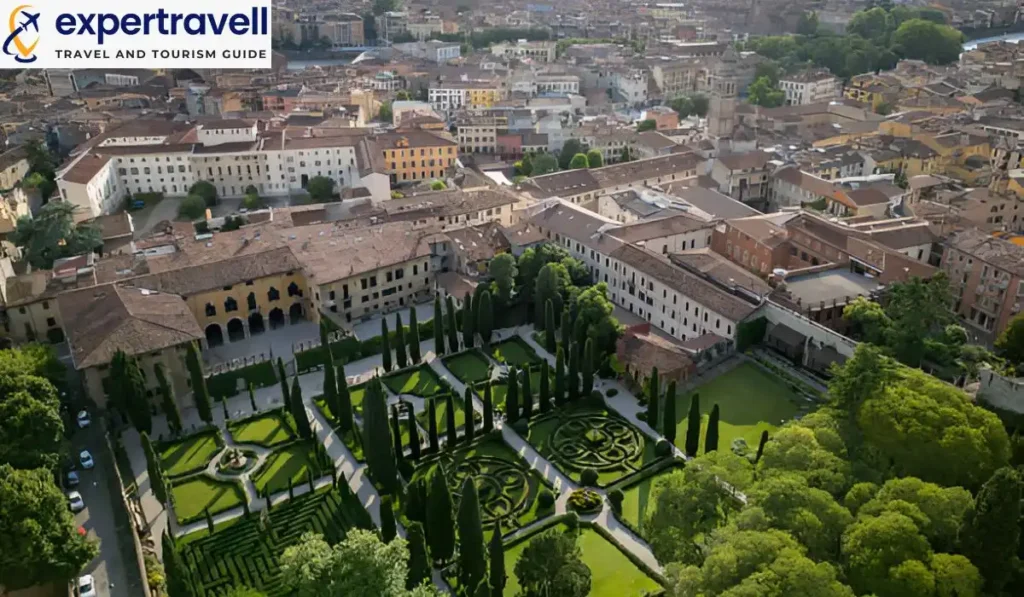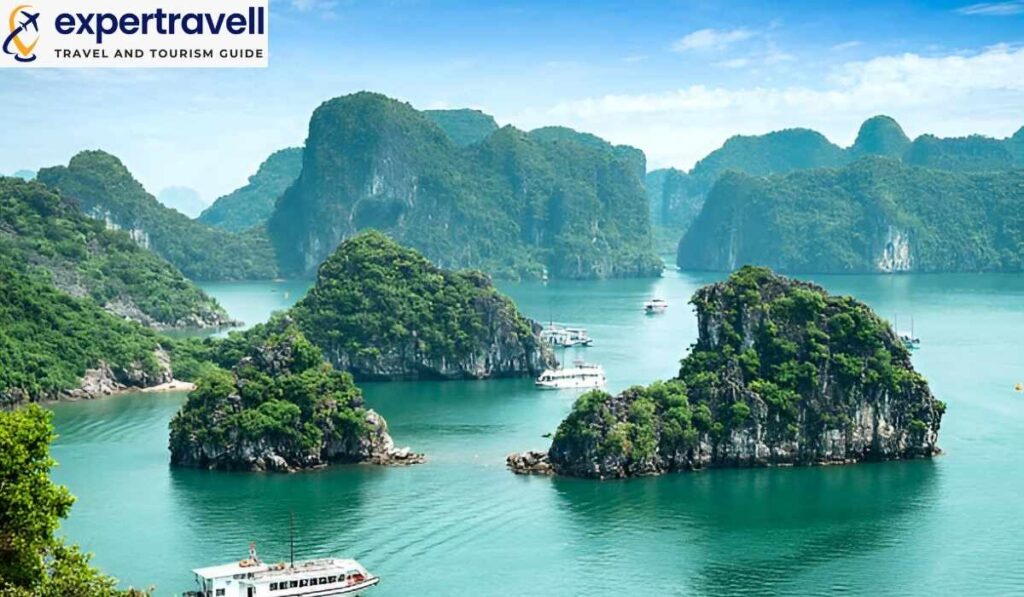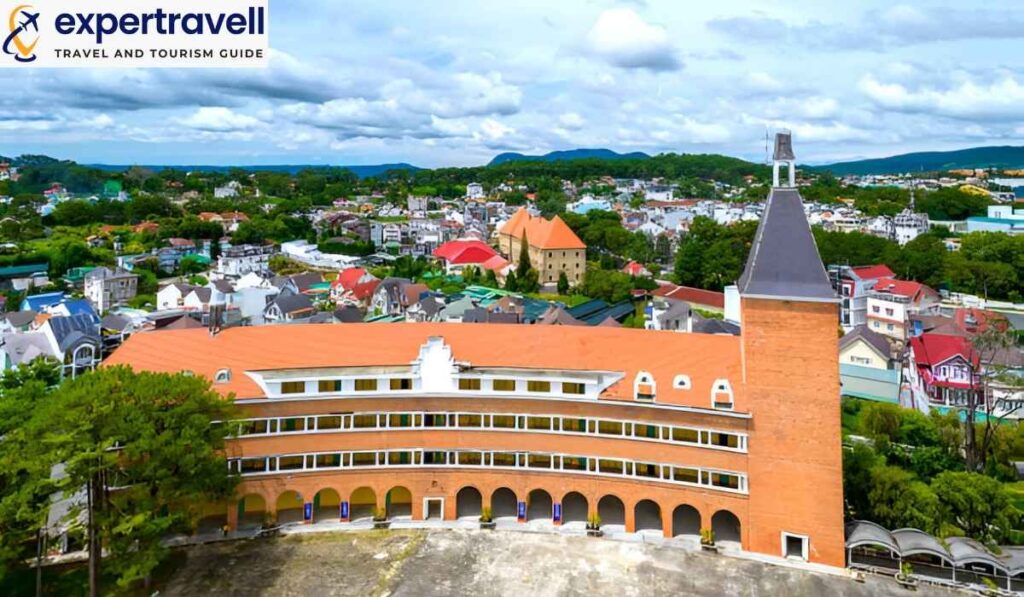Northern Italy enchants with its blend of history, culture, and stunning scenery. From Milan and Venice to the Alps and lakes, it offers something for every traveller. Art lovers can enjoy renowned museums, while food enthusiasts savour local delicacies. The Dolomites and Lake Como invite nature seekers, and cities like Turin and Verona reveal Italy’s rich mediaeval past. Each destination offers unique charm, promising unforgettable experiences, much like spending one day in Flåm for a glimpse of Nordic beauty.
Geography and Climate of Northern Italy
Northern Italy encompasses diverse landscapes and climates. The region stretches from the Alps to the Po Valley, with coastal areas along the Mediterranean. Its geography shapes distinct weather patterns and influences the development of major urban centers.
Major Cities and Towns
Milan stands as Northern Italy’s largest city and financial hub. It boasts a population of about 1.4 million people. Venice, famous for its canals, has around 260,000 residents. Turin, once Italy’s first capital, is home to roughly 870,000 people.
Other key cities include:
- Bologna: Known for its medieval architecture
- Verona: The setting of Romeo and Juliet
- Genoa: A major port city
These urban areas blend historic charm with modern amenities. Many sit near important waterways or in strategic mountain passes.
Natural Landscapes
The Alps form a natural border in the north. Their peaks include Mont Blanc, the highest mountain in Western Europe at 15,781 feet. The Dolomites, part of the Alps, offer stunning views and popular ski resorts.
The Po Valley spans much of Northern Italy. This fertile plain supports agriculture and industry. Lakes dot the region, with Lake Como and Lake Garda among the most famous. Coastal areas vary from rocky cliffs to sandy beaches. The Italian Riviera stretches along the Ligurian Sea, known for its picturesque towns.

Weather Patterns
Northern Italy’s climate changes with elevation and proximity to water. The Alps see cold winters with heavy snowfall. Ski season typically runs from December to March.The Po Valley has hot summers and cold winters. Fog often blankets the area in fall and winter. Milan’s average July temperature is 75°F (24°C), while January averages 38°F (3°C).
Coastal regions enjoy milder temperatures year-round. The Italian Riviera has a Mediterranean climate. Genoa’s average highs range from 55°F (13°C) in winter to 82°F (28°C) in summer. Spring and fall offer pleasant weather for sightseeing. April to June and September to October are ideal for city visits.

Cultural Highlights
Northern Italy offers a rich tapestry of cultural experiences. From mouthwatering cuisine to unique local dialects and vibrant festivals, this region captivates visitors with its traditions and heritage.

Local Cuisine
Northern Italian food is hearty and flavorful. Risotto is a staple dish, especially in Milan where saffron-infused risotto alla Milanese reigns supreme. Polenta, a cornmeal porridge, is popular throughout the region. In Emilia-Romagna, Parmigiano-Reggiano cheese and prosciutto di Parma are local treasures. Lombardy is famous for its bresaola, air-dried salted beef.
Seafood plays a big role in coastal areas like Liguria, where pesto sauce originated. The Alps influence mountain cuisines with dishes like fondue and canederli (bread dumplings). Wine is an integral part of Northern Italian culture. Notable varieties include Barolo and Barbaresco from Piedmont, and Prosecco from Veneto.
Language and Dialects
While Italian is the official language, Northern Italy has many regional dialects. These dialects can vary greatly even between nearby towns. Venetian is spoken in Venice and surrounding areas. Piedmontese is common in Turin and parts of Piedmont. Lombard dialects are used in Lombardy and parts of Switzerland.
Some areas have officially recognized minority languages. For example, German is an official language in South Tyrol. French is recognized in parts of Aosta Valley. These dialects and languages reflect the region’s complex history and cultural influences from neighboring countries.

Festivals and Events
Northern Italy hosts numerous festivals that showcase its cultural diversity. Venice’s Carnival, held in February, is world-famous for its elaborate masks and costumes. Milan Fashion Week attracts global attention twice a year. The Palio di Siena, a historic horse race, takes place in July and August in Tuscany.
Food festivals are common. The Alba White Truffle Fair celebrates the prized fungus each autumn. Parma’s Festival del Prosciutto honors the region’s famous ham. Music lovers flock to Verona for its summer opera festival, held in a Roman amphitheater. The Ravello Festival on the Amalfi Coast offers classical concerts with stunning coastal views.

Historical Sites and Monuments
Northern Italy boasts a wealth of historical sites and monuments that showcase its rich cultural heritage. From UNESCO-recognized landmarks to grand castles and world-class museums, the region offers endless opportunities for history buffs and art lovers.
UNESCO World Heritage Sites
Northern Italy is home to many UNESCO World Heritage Sites. The city of Vicenza, 60 kilometers west of Venice, features 23 monuments in its historic center designed by renowned 16th-century architect Andrea Palladio. Mantua, in Lombardy, is another UNESCO site where time seems to have stopped centuries ago. Its historical center preserves beautiful facades and architectural treasures.
Venice and the Veneto region contain several UNESCO sites, including the city of Venice itself. The Dolomites mountain range is recognized for its natural beauty and geological significance. Other notable UNESCO sites in Northern Italy include the prehistoric pile dwellings around the Alps and the early Christian monuments of Ravenna.
Museums and Art Galleries
Northern Italy’s museums and art galleries house some of the world’s most important collections. Florence’s Uffizi Gallery displays masterpieces by Renaissance artists like Botticelli, Leonardo da Vinci, and Michelangelo. Milan’s Pinacoteca di Brera showcases works by Italian masters from the 14th to 20th centuries.
The Egyptian Museum in Turin holds the largest collection of Egyptian artifacts outside Cairo. Venice’s Peggy Guggenheim Collection features modern art by Picasso, Dalí, and Pollock. Smaller cities like Parma and Ferrara also offer impressive museums with local art and historical artifacts.
Historic Castles and Villas
Northern Italy is dotted with stunning castles and villas that offer glimpses into the region’s aristocratic past. The Castello Sforzesco in Milan, once home to the powerful Sforza family, now houses several museums. Palladian villas, designed by Andrea Palladio, are scattered throughout the Veneto countryside.
Lake Como is famous for its elegant villas, including Villa Carlotta with its beautiful gardens. The Castello di Fenis in Aosta Valley is a well-preserved medieval castle with impressive frescoes. In Emilia-Romagna, the Este Castle in Ferrara stands as a symbol of the city’s Renaissance glory.
Outdoor Activities
Northern Italy offers a wealth of outdoor activities for nature lovers and adventure seekers. From hiking in the majestic Dolomites to skiing world-class slopes and enjoying water sports on stunning lakes, there’s something for everyone. If you’re inspired to explore more captivating destinations, make sure to visit Montreal for its unique blend of nature and urban charm.

Hiking and Trekking Routes
The Dolomites provide some of the best hiking opportunities in Northern Italy. Popular trails include the Alta Via 1, a long-distance route that spans 150 kilometers. This path takes trekkers through breathtaking mountain scenery and alpine meadows.
For day hikers, the Tre Cime di Lavaredo circuit offers spectacular views of the iconic three peaks. The 10-kilometer loop is manageable for most fitness levels. In the Aosta Valley, hikers can explore ancient Roman roads and medieval relics. The area’s well-marked trails range from easy walks to challenging multi-day treks.

Skiing and Mountain Resorts
Northern Italy boasts world-class ski resorts in the Alps and Dolomites. Cortina d’Ampezzo, host of the 1956 Winter Olympics, remains a top destination for skiers and snowboarders. Its 120 kilometers of slopes cater to all skill levels.
The Brenta Dolomites offer excellent skiing at Madonna di Campiglio. This resort features 150 kilometers of runs and modern lift systems. For a unique experience, Val Gardena connects three picturesque villages via ski slopes. Visitors can enjoy 175 kilometers of pistes and stunning mountain vistas.

Lakes and Water Sports
Lake Como is a prime spot for water activities. Visitors can try windsurfing, kayaking, or stand-up paddleboarding. The lake’s calm waters are perfect for beginners. Lake Garda, Italy’s largest lake, offers excellent conditions for sailing and kitesurfing. Its consistent winds attract water sports enthusiasts from around the world.
For a quieter experience, Lake Orta provides peaceful canoeing and fishing opportunities. Its serene setting is ideal for those seeking a relaxing day on the water.

Food and Wine Experience
Northern Italy offers a feast for the senses with its rich culinary traditions and world-class wines. Visitors can immerse themselves in the region’s gastronomic delights through various experiences.
Vineyards and Wine Tastings
The rolling hills of Northern Italy are home to some of the world’s finest vineyards. Piedmont is famous for its Barolo and Barbaresco wines, made from Nebbiolo grapes. Visitors can tour wineries and learn about the winemaking process.
Many vineyards offer guided tastings where guests can sample different vintages. The Prosecco region in Veneto is perfect for sparkling wine lovers. Here, visitors can enjoy panoramic views of the vineyards while sipping on crisp, bubbly Prosecco.
Wine tours often include visits to historic cellars and explanations of local wine traditions. Some wineries also pair their wines with regional cheeses and cured meats for a full flavor experience.

Cooking Classes and Culinary Tours
Hands-on cooking classes let visitors learn the secrets of Northern Italian cuisine. Popular dishes to make include risotto, fresh pasta, and tiramisu. Classes often start with a trip to local markets to select fresh ingredients.
Food tours offer a chance to taste regional specialties. In Bologna, visitors can sample authentic tortellini and mortadella. Parma is famous for its prosciutto and Parmigiano-Reggiano cheese.
Many tours include stops at traditional producers to see how local foods are made. Visitors can watch cheese-making demonstrations or learn about balsamic vinegar production in Modena.

Michelin-Starred Restaurants
Northern Italy boasts many Michelin-starred restaurants for those seeking fine dining experiences. These eateries showcase innovative takes on traditional Italian cuisine using top-quality local ingredients.
In Milan, visitors can dine at multi-starred restaurants like Enrico Bartolini al Mudec. Venice offers elegant canal-side dining at Ristorante Quadri. Turin is home to Combal.Zero, known for its creative molecular gastronomy.
Many high-end restaurants offer tasting menus that highlight seasonal ingredients. Some also provide wine pairings to complement each course. Reservations are often required well in advance for these exclusive dining experiences.
Accommodations and Lodgings
Northern Italy offers a wide range of places to stay. Travelers can find fancy hotels, cozy bed and breakfasts, and unique farm stays. These options let guests enjoy the area’s beauty and culture.
Luxury Hotels
Northern Italy has many top-notch hotels. The Hotel Santa Caterina on the Amalfi Coast is a great choice for 2024. It gives guests amazing views and top service. Lake Como is home to grand hotels with lake views. These places often have spas, pools, and fine dining. Many are in old villas with beautiful gardens.
In cities like Milan and Venice, luxury hotels are near famous sights. The Galleria Vittorio Emanuele II in Milan has high-end hotels close by. Venice’s luxury hotels often sit right on the canals.
Boutique Bed and Breakfasts
Small, charming B&Bs are common in Northern Italy. They give guests a more personal touch than big hotels. Many are in old homes or buildings with local character. In Venice, B&Bs let visitors stay in quiet areas away from crowds. Owners often share tips about hidden gems in the city. Breakfast might include fresh pastries and strong Italian coffee.
The lakes region has B&Bs with stunning views. Lake Garda and Lake Lugano both have many options. These places often have gardens or terraces where guests can relax.
Agritourism and Farm Stays
Farm stays are a great way to see rural Northern Italy. Guests can stay on working farms and vineyards. Many offer hands-on activities like cooking classes or wine tasting. The Dolomites have mountain farm stays. Visitors can help with farm chores or just enjoy the fresh air. These places often serve meals made with food grown on-site.
Tuscany is famous for its farm stays. Guests can stay in restored farmhouses surrounded by olive groves or vineyards. Some places let visitors join in the grape or olive harvest.
Transportation and Mobility
Getting around Northern Italy is easy with many transport options. Visitors can choose between trains, buses, cars, bikes, and walking to explore the region’s cities and countryside.
Public Transport Options
Trains are the best way to travel between major cities in Northern Italy. The rail network is extensive and reliable. High-speed trains connect Milan, Venice, and Bologna in just a few hours. Regional trains offer cheaper tickets but take longer.
Buses fill gaps in train routes. They’re useful for reaching smaller towns and rural areas. Many cities have good public bus systems too.
Vaporetti (water buses) are Venice’s main public transport. They travel along canals and to nearby islands. Tickets can be bought at stops or from machines.
Car Rentals and Driving
Renting a car gives freedom to explore at your own pace. It’s great for visiting rural areas and small towns. Major rental companies have offices in big cities and airports. Driving in Italy can be challenging. Cities have limited parking and restricted zones.
Rural roads may be narrow and winding. An International Driving Permit is needed along with your license. Italian highways (autostrade) are fast but have tolls. Keep cash or a credit card handy for payments.
Biking and Walking Paths
Many Northern Italian cities are bike-friendly. Milan, Verona, and Bologna have bike-sharing programs. Rentals are available in most tourist areas.
The countryside offers scenic bike routes. The Po River Delta has flat paths perfect for casual cyclists. More challenging trails exist in the Alps and Dolomites.
Walking is ideal for exploring historic city centers. Venice and Cinque Terre are best seen on foot. Many towns have pedestrian-only zones in their centers. Nature lovers can enjoy hiking trails in national parks and along Lake Como and Lake Garda.
Frequently Asked Questions
Northern Italy offers many attractions and experiences for visitors. Here are answers to some common questions about travelling in this region.
What are the must-visit cities in Northern Italy?
Milan, Venice, Turin, Bologna, and Genoa are essential stops for culture and history.
When is the best time to visit Northern Italy?
Spring (April to June) and autumn (September to October) offer pleasant weather and fewer tourists.
How can I travel between cities in Northern Italy?
High-speed trains, car rentals, and buses are great for exploring the region.
What are the top natural attractions in Northern Italy?
The Dolomites, Lake Como, and Lake Garda provide breathtaking scenery and outdoor activities.
What culinary specialities should I try in Northern Italy?
Try Risotto alla Milanese, Bolognese sauce, Pesto Genovese, and polenta for a taste of the region.
What are some recommended itineraries for Northern Italy?
A 7-day itinerary could include Venice, Verona, and Lake Como, while a 10-day plan might add Milan and the Dolomites.



